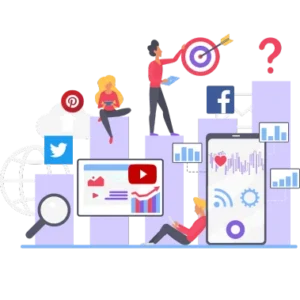Do you know which stage strengthens your business?
Creating a solid brand identity is essential for every business. It makes the best impression and helps to connect with your potential customers.
Creating a brand for yourself to stand out from the competition would be best. Creating a brand image is not just about using names and designs. It conveys your business personality, perception, and emotional connections to your customers.
This blog guide shares how to build a brand from scratch, its importance, and tips and tricks for building your brand.
What is a brand?

A brand is a name, symbol, logo, design, or combination of these elements created to identify your business’s products and services and help differentiate it from other competitors.
This brand name helps customers trust your business.
Example
“We use Uber, Whatsapp, Google, Amazon Marketplace, and more, which are emotionally attached brands that have become part of our lives.”
Understanding the brand building blocks
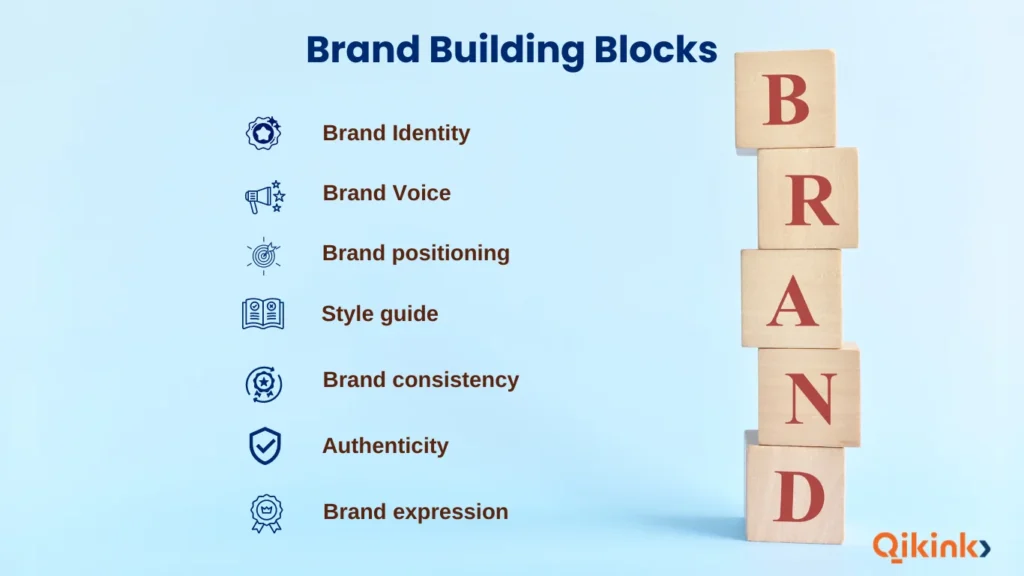
Creating a brand involves several building blocks that help to shape your brand identity and perception.
These elements create a memorable brand that resonates with your targeted audience.
Brand identity
A clear brand identity conveys your business value and mission. Clear visual elements such as logos, color palettes, and typography help create a recognizable brand identity.
A strong brand communicates your business perspectives clearly to your customers.
Brand voice
It is the unique personality expressed through communication through tone, style, and words.
For example, Nike’s voice is motivational and energizing, and their slogan, “Just do it,” conveys pushing boundaries and overcoming challenges.
Their brand voice consistently communicates through social media, websites, and advertisements, which help to connect with people.
Brand positioning
It is the process of clearly identifying the target demographics, including the preferences and behaviors of the audience.
It helps to highlight what makes your brand unique from other competitors and how your brand images are positioned in customers’ minds.
Style guide
It is a brand guideline with some specifications about representing your brand. It ensures consistency in how your brand elements, such as logo, typography, color, design, icon, symbol, and image, are presented across all platforms.
This style guide lets everyone learn precisely how to present their brand without changing guidelines on other platforms.
How to build a brand in 7 steps
Beyond developing a brand name and logo, creating a powerful brand identity requires significant work. If you are new to the business and don’t have ideas about how to build a brand for a small business, here are the steps for creating a brand from scratch.
Step 1: Research your brand's target audience and target market

Before building a brand, you must Understand your target audience and market demands. Your target audience is the group of people who want to buy products or services from your business. If you don’t find your targeted audience, your brand will have little impact on your business.
There are many steps available to find your audience and market demand. Here are some
Who benefits?
The first goal is to determine who will benefit from your business. For example, we take a clothing brand. They only sell T-shirts from S to XL. On the other hand, many people need plus-size T-shirts.
What did they do?
Now, you have to find this gap, create some ideas, and start targeting this specific audience that needs plus-size t-shirts. Your business will benefit them.

Research your market
By finding your market demands, you can get ideas from competitors by searching their social media platforms and websites to find who they are targeting.
This will help you find your audience. You can also use Semrush or Google keyword planner to find your audience by searching keywords.
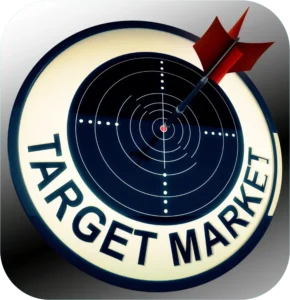
Buyer persona
By collecting this information, you can create a buyer persona. A persona is a fictional figure in marketing who represents a specific customer type.
It assists in determining the attributes, requirements, and habits of your target audience.
When designing personas, consider the following factors:
- Gender, Age, Location, Income
- Education Level, Job, Marital status, Interests

📌This information helps you decide how they show interest in your businesses.
Step 2: Create a positioning statement

Source: Tesla
Brand positioning statements describe your unique brand value proposition and target audience. They help establish your brand in niche markets.
The simplest method is to create a positioning statement. You can use one or two lines like this to “introduce yourself and what you do.”
These statements contain several facts about your business.
- Who are you?
- What do you do?
- Who do you serve?
- What values do you offer?
- What are your values?
For example, Tesla’s unique statement accelerates the world’s transition to sustainable energy.
Positioning: Advanced, eco-friendly cars, and solar panels for those interested in technology and sustainability.
📌Knowing your position and unique selling propositions will enable you to start developing marketing campaigns and branded content that communicates to your target market in the appropriate tone.
Step 3: Choose your brand name
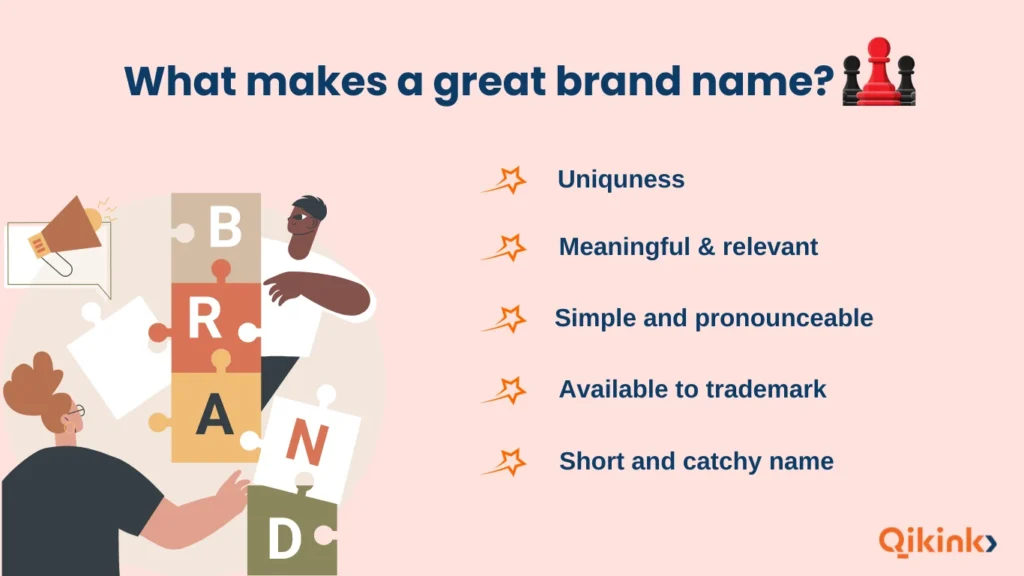
Choosing a brand name is a crucial step for any business. It represents the values, offerings, and brand experience of companies. The goal of a brand name is to capture attention and connect with potential customers.
Be careful to research what is available before choosing a name because your brand name will also define the URL/domain of your eCommerce brand.
To obtain some brand name inspiration, utilize company name generator tools or consult businesses to choose the ideal name for your business.
👉Check out our “How to Choose a Brand Name” blog guide for simple steps to creating a brand name for your business.
Step 4: Write your brand story
Writing your brand story creates an emotional connection with your targeted audience. It helps businesses raise awareness of their brands and boost engagement.
Writing an authentic brand story can get people interested in your brand. It helps them remember who you are, develops empathy for your brand, and ultimately boosts customer engagement.
What makes a good brand story?
- Create an emotional connection.
- Stay authentic is the deciding factor for 88% of customers supporting a business.
- Highlight the benefits of your products and services.
You can convey your company’s history through blog posts, video advertising, or social media posts.
The following suggestions will help in the procedure:
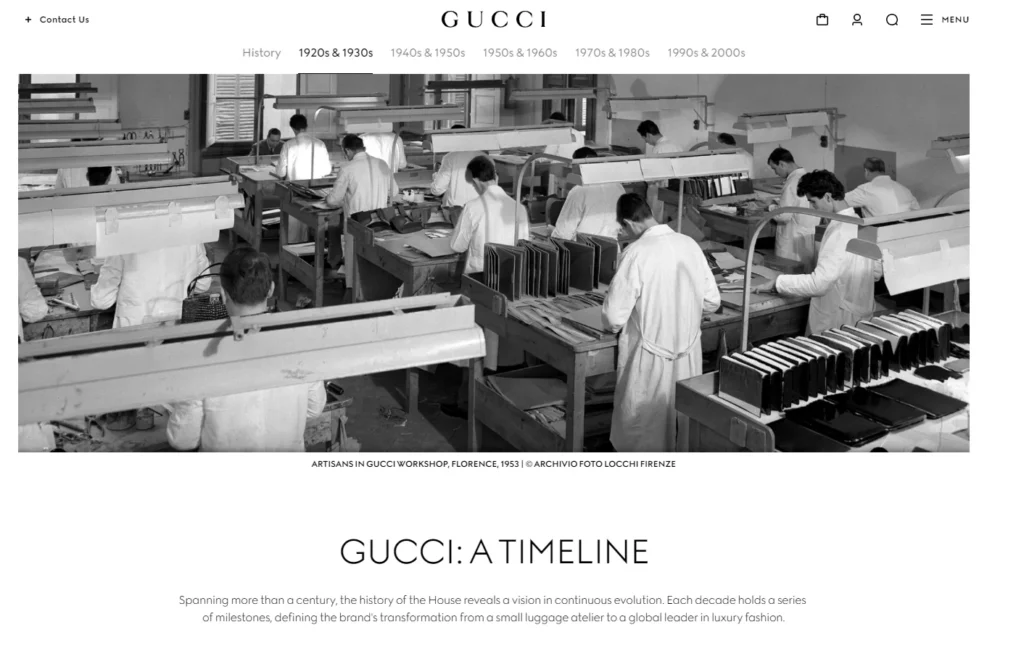
Source: Gucci
Give a background narrative:
Sharing stories about the company’s humble origins or founders may make the brand more approachable to the audience.
Share the challenges:
Give an account of the obstacles you faced when building your brand and how you overcame them.
Think about the bigger picture:
Establish a problem in your market and develop marketing strategies to address it.
📌A good story will make people love your company and trust your brand.
Step 5: Use Brand color palette and Style guide

Once you’ve decided on a name, you’ll need to think about how you’ll visually represent your brand, including your colors and fonts. This will be useful when you begin to create your website.
Color palette:
Colors convey the emotion you want to convey to customers and help you keep it consistent across your overall brand.
Consider how readable white and black text will be over your color palette and how colorful text may seem over white and black backgrounds.
According to studies, colours increase brand identification by 80% and affect 85% of customer purchasing choices.
For example, Fanta, Mozilla Firefox, and Amazon use orange, which expresses affordability, friendliness, and enthusiasm.


Select your font styles:
Just like your brand colours, the fonts you choose may significantly influence how your clients perceive your brand.
For example, sans-serif typefaces are often more contemporary and approachable and add an attractive look to your brand.


Step 6: Design your logo and Write a slogan
Logos
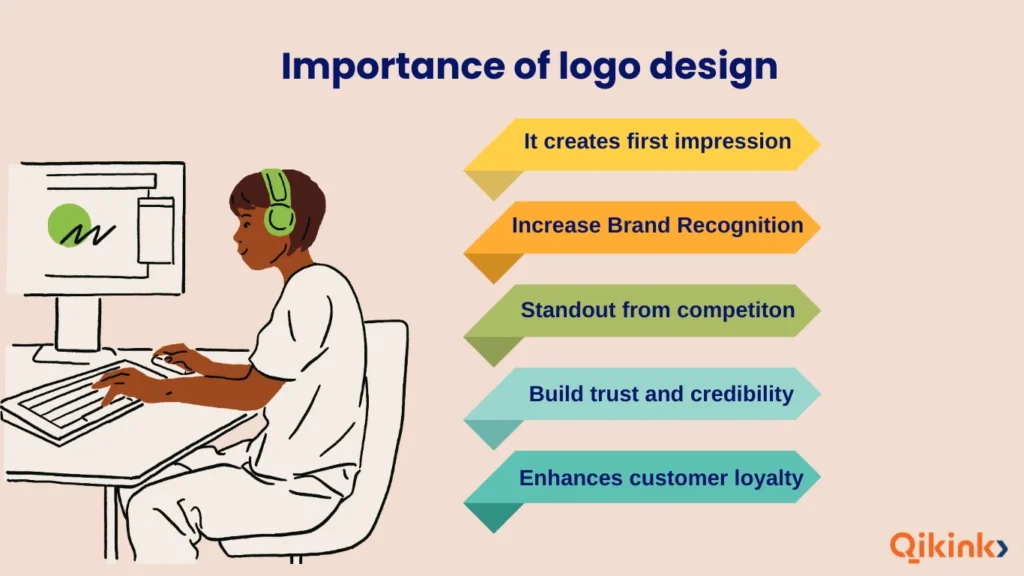
A great logo creates the first impression with your customers. A well-designed logo increases your brand recognition and drives potential customers to your businesses.
Creating a memorable logo involves important elements such as simplicity, clarity, and relevance to brand concepts. For example, Apple’s trademark apple picture with the bite taken out of it is self-explanatory.
Types of logo
Abstract logos
These logos use geometric shapes, symbols, and abstract elements in designs that represent the brand. It conveys uniqueness and creativity. For example, Microsoft, Pepsi
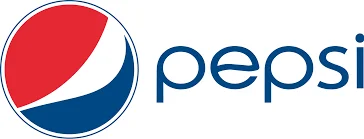
Emblem
This emblem logotype consists of fonts, symbols, and images inside geometric shapes or badges. It gives your brand a rich heritage, such as Starbucks or Harly-Davidson.

Wordmark
Wordmark types are font-based, and they focus on company names. They design a logo with unique fonts, letter spacings, and styles. For example, Google, VISA, Disney, coca-cola

Mascot
A mascot logo is an artistic figure that represents your company. This logotype uses illustrated characters in logo designs. They are frequently bright, cartoonish, and entertaining. For example, KFC, Reddit
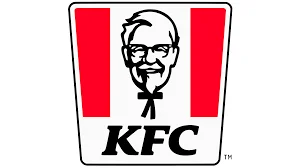
Letter mark
Letter marks or monogram logos are made with text only. They use initials and acronyms to represent brands, such as NASA, HBO, IBM, HP, and LG.

Pictorial mark
Pictorial marks use images. These are icon or graphic-based designs. For example, Apple, Instagram, X/Twitter, Snapchat

👉Check out our What Makes a Good Logo Design blog guide for detailed design steps.
Slogan
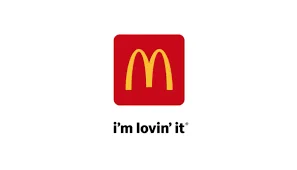
A slogan expresses the aim of a brand in a brief yet memorable manner. When making one, take the following steps:
- List terms relevant to your business and niche. Don’t be afraid to use strong language to emphasize the brand’s message and create emotion.
- Research and make notes from competitors or use an online slogan generator. Make sure to keep the slogan simple.
- After collecting the list, create an internal poll with relevant team members to narrow down the options.
- Use social media platforms and other marketing materials to determine which slogan works better.
While a slogan is an optional aspect of the brand-building process, it is worth considering if you want to increase your brand’s reach and awareness.
A tagline helps your customers understand your brand and what it does.
For example, Nike’s slogan is “Just Do It.” It’s designed to motivate people to take action and push their limits.
Step 7: Integrate your brand
Businesses must incorporate their brand into everything they do to be recognized. Consumers are increasingly looking for authentic, transparent, and socially responsible brands.
Consider how you might bring attention to your brand across many media.
How to apply your branding across your business

Here we share some examples for applying your brand across your business.
Select a store theme that complements your brand identity and use your brand colors. Remember to include your logo on every page and to emphasize your brand voice throughout your website content.

Social media:
Social media is a wonderful technique for increasing brand recognition. You may share posts showcasing your personality, images and visuals defining your company, and even urge people to promote your brand with friends and coworkers.
BrightLocal says 84% of customers trust online reviews as much as personal recommendations.

Marketing campaigns:
Whether sending out email newsletters or communicating with clients via podcasts, your brand should be evident in every marketing campaign.
Ensure your brand image and voice are constantly shared across all advertising efforts.

Brand Building Tips in 2025
Here are some essential tips for building your brand.
- Be clear on your goals and objective
- The brand name should be unique and straightforward.
- The brand logo should be simple and easily recognizable.
- Write engaging brand stories to connect with the audience
- Create a solid visual identity like a brand image, slogan, logo
- Maintain a consistent brand voice
How to build a brand through social media
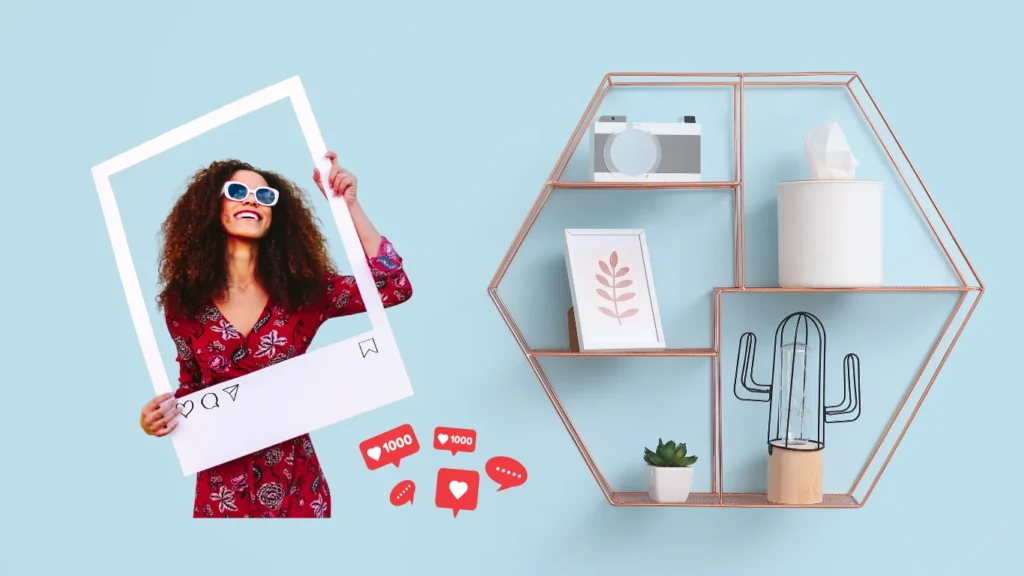
Social media platforms are essential for any business to increase its brand awareness and drive sales on their business.
34% of Indians choose brands based on social media influencers’ suggestions and
43% of respondents are at least checking out recommended products/services by the influencers, according to the survey by iCubewire.
Building a brand through social media requires strategic approaches. This involves consistent engagement and creating content that resonates with a targeted audience.
Here are some strategies and ideas to help you build your brand effectively:
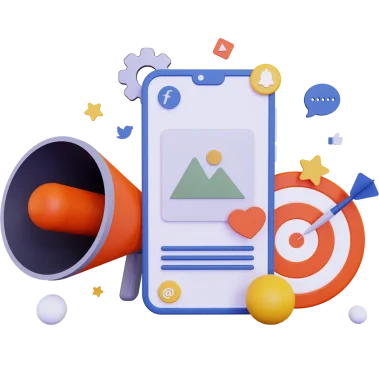
Set your Goals
Find what you want to achieve in building a brand on social media. For example, You Could Create brand awareness, increase sales, or increase customer engagement. Identify your core values to create engaging content.

Research your audience
Find your targeted audience, target demographics, interests, behaviour, and preferences. This will help you find the best platforms to build your brand.

Choose your social platforms.
Find the social media platforms that your targeted audience is actively using. For example, Instagram, Facebook, X, and Linkedin).
Utilize each platform’s unique features like Instagram stories, Reels, YouTube shots, and more.

Create content
Focus on creating quality and engaging content that resonates with your audience.
Try to use different types of content in your posts, such as graphic images, videos, stories, blogs, live streams, and more.
Use tools like Canva to create engaging visual content and social media graphics.

Interact with your audience
Interact with your audience through social media polls, quizzes, and streaming live chats. Promptly reply to their comments and messages to build trust.
Always strive to provide excellent customer service to gain the trust of your customers.

Leverage influencers
Collaborating with influencers who share your brand’s values guarantees authenticity, credibility, and a connection with your target audience. Collaborate with influencers who are aligned with your brands.
Influencers have a well-established audience. People will likely listen to them and purchase the items.
Look for niche-specific influencers with a small yet engaging audience.

Regularly share content
Maintain a consistent posting schedule to keep your audience engaged and informed. Using keywords on hashtags can provide additional benefits, such as helping your brand reach a wider audience, increasing your profile’s followers, and increasing your content’s likes and shares.

Audit your social media
Use your social media analytics to understand which posts perform well. Use these insights to improve your engagement rates.
Building a solid brand presence on social media involves consistency and engaging unique content strategies.
👉Check out our Social Media for Business: A Practical Guide in 2025 (New Trends), which will help you build a brand online.
Read More
Frequently Asked Questions
How long does it take to build brand awareness?
Building brand awareness requires a catchy slogan and brand name. It can take 3 months to 1 or 2 years, but active and engaging social media campaigns can give fast results. Building brand awareness requires consistency, patience, and strong strategies.
What brand elements are essential for building strong brand equity?
Here are some key elements essential for building strong brand equity.
- Awareness,
- Reputation,
- Differentiation,
- Energy,
- Relevance,
- Loyalty
- and flexibility.
How do I build a community around my brand?
To build a community around your brand, first, you need to define your band’s purpose. Then, create social media pages to build community and share your knowledge through blogs and videos on your community channel, for example, YouTube.
Consistently create content and share your experience. And listen to customer feedback.
Which targeting option is best for achieving brand awareness?
To achieve brand awareness, the best targeting options are reaching a wide audience and targeting an interest-based audience. This maximizes your reach and increases engagement.
How to build a brand in India?
Building a brand in India consists of several steps.
Step 1: Research your brand’s target audience and target market
Step 2: Create a positioning statement
Step 3: Choose your brand name
Step 4: Write your brand story
Step 5: Use the Brand color palette and Style guide
Step 6: Design your logo and Write a slogan
Step 7: Integrate your brand


